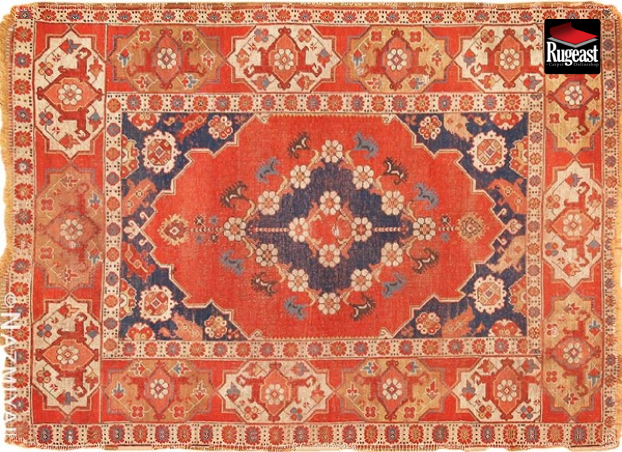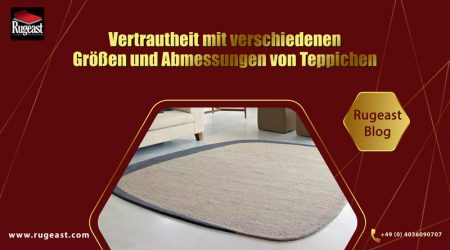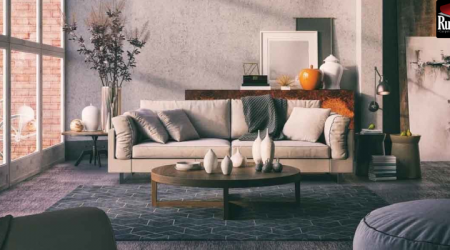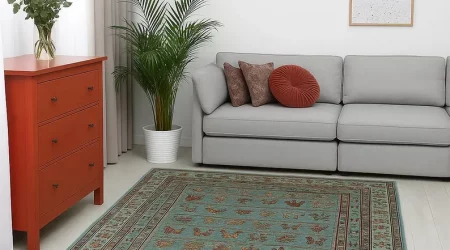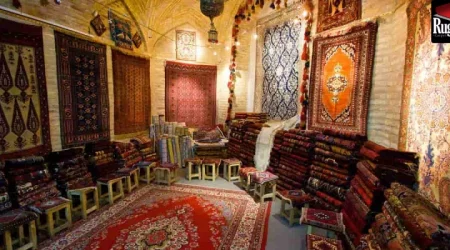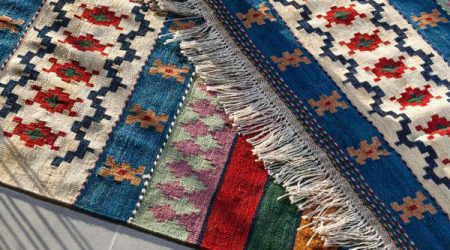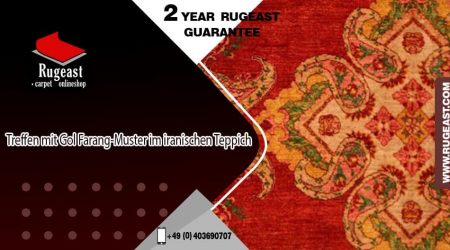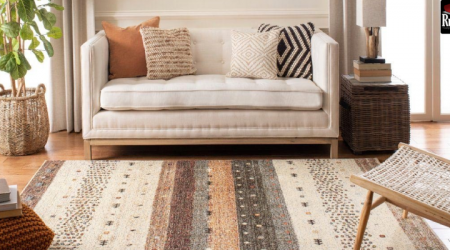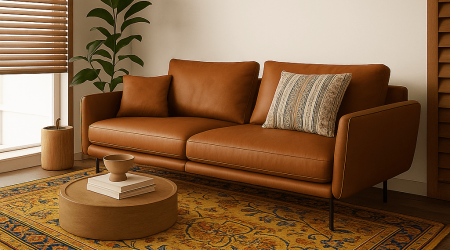Transylvanian Carpets
Geographical Location of Transylvanian Carpets
historical region of Transylvania, located in Eastern Europe, was part of the Austro-Hungarian Empire until World War I. In the early 20th century, it became part of Romania.
This region is bordered by the Carpathian Mountains to the north and east, the Transylvanian Alps to the south, and the Bihor Mountains to the west.
History of Transylvanian Carpets
The first settlers of Transylvania were Germanic people, invited by Hungarian rulers to revitalize the region’s economy and strengthen its defenses, especially after the Mongol invasions in the 13th century.
Known locally as Saxons, these settlers established towns with Gothic-style churches at their centers. The area they inhabited is now called “Seven Fortresses.”
Three centuries later, with the rise of Protestantism, many Saxons abandoned Catholicism and sought to redesign their churches. They removed Catholic furnishings, leaving church interiors open for new decorative ideas.
After the fall of Constantinople, the Ottoman Empire defeated Hungary and took control of Budapest. However, Transylvania was allowed to operate as an autonomous vassal state, paying tribute to the Ottomans.
The expansion of Ottoman territories led to extensive trade between the empire and Europe, making Ottoman carpets highly popular. Wealthy Saxons commissioned these carpets for their homes and churches. The Saxons used Ottoman rugs as wall decorations in Gothic churches, a tradition possibly originating from the custom of wealthy Transylvanians donating their carpets to churches after death.
Over time, a large collection of carpets accumulated in churches. During services, families would sit on carpets donated by their ancestors, subtly showcasing their wealth and status.
This Saxon tradition of donating carpets to churches closely resembles the Islamic practice of dedicating carpets to mosques. Such donations have resulted in the preservation of many valuable and historic handmade carpets in Islamic mosques.
read more: ghom carpets
The Transylvanian tradition has led to a significant collection of carpets, far exceeding what can be displayed. Today, the Black Church and several museums in Transylvania house many Ottoman carpets, some of which are unparalleled even in Turkish museums. These carpets were categorized and dated in 1898, and carpet researchers refer to this collection as “Transylvanians.”
The best examples of these carpets can be found in Protestant churches in Budapest, Brașov, Bucharest, and St. Martin’s Church.
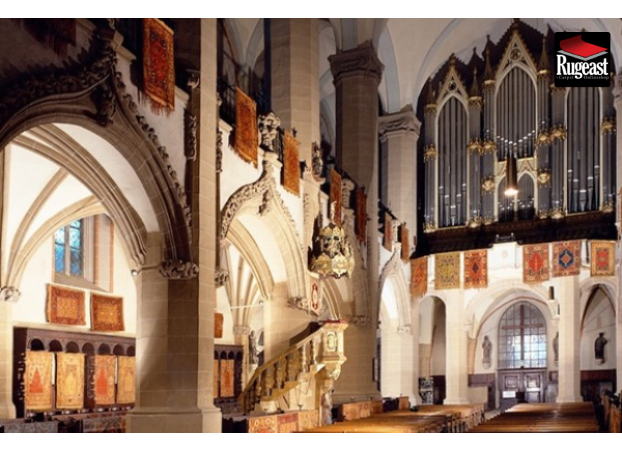
Materials Transylvanian Carpets
These carpets were woven using Anatolian techniques, with wool for both the pile and warp.
Based on existing examples, the weavers incorporated the selvage into the weaving process, using the same wool as the carpet’s ground.
read more: mashhad carpets
Visual Features of Transylvanian Carpets
Transylvanian carpets are often designed with single or double arches, resembling prayer mats, and include inscriptional patterns in the main border.
They are generally small in size and share unique structural features. The main border is flanked by two narrow borders, with decorations in the field, borders, and spandrels categorized into geometric and floral patterns.
Little is known about the origins of these designs. However, the overall composition bears similarities to Safavid prayer rugs from the 16th century or those from Cairo, as well as earlier architectural works. For example, the tiled mihrab with Arabic spandrels in the Tomb of Mehmed I in Bursa (created around 1420 by Tabriz craftsmen) or late 16th-century Iznik tiled panels in the Tomb of Selim II in Istanbul.
The common element in all Transylvanian carpets is the inscriptional and star motifs in the borders, resembling 16th-century Persian carpet and ceramic designs. This type of border lacks a direct prototype among Ottoman knotted carpets but shares similarities with Mamluk rugs, Safavid prayer rugs, silk kilims, Islamic bookbindings, miniatures, and architectural elements.
The color palette is limited but vibrant, including shades like brown, red, ochre, ivory white, blue, and green. The ground is typically ochre or saturated red.
Most Transylvanian prayer rugs feature simple designs with solid-colored backgrounds.
The connection between the design elements of the field, borders, spandrels, and the color scheme reflects the essence of Anatolian carpets, also evident in Transylvanian carpets.
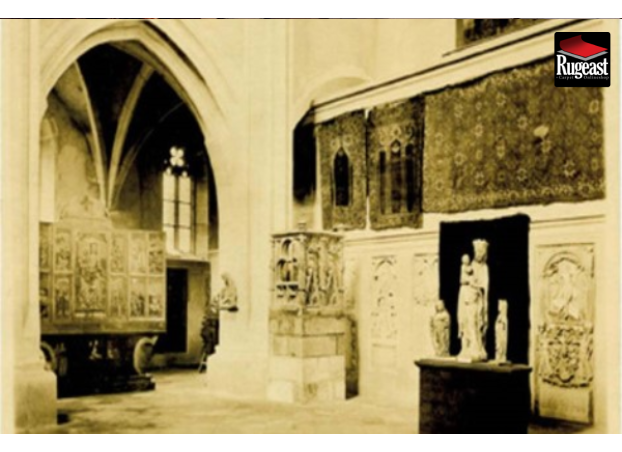
Designs of Transylvanian Carpets
Single-arched prayer rugs vary in type and shape, with predominantly plain, monochromatic backgrounds and minimal decorative elements like lamps, columns, vases, single flowers, vine leaves, palm leaves, and roses.
In some cases, floral motifs and leaves are sparsely distributed across the field without any connections.
An example of a single-arched prayer rug can be seen in the painting Portrait of a Family Making Music by Pieter de Hooch, a Dutch artist.
The decoration on Transylvanian carpets often includes inscriptions above the mihrab, sometimes featuring Quranic verses adorned with geometric and floral patterns. This section, known as “elinik,” originates from a Turkish term referring to the forehead’s position during prostration.
The design resembles the interior windows of qibla walls in mosques designed by Mimar Sinan, the Ottoman architect and mathematician.
Columned prayer rugs have two to six columns, sometimes paired on a shared base. These rugs often feature red backgrounds with floral elements in place of lamps.
Single-arched and columned Transylvanian prayer rugs are usually woven top-down using a reverse weaving technique, except for a few examples.
Double-arched prayer rugs, woven during the 16th and 17th centuries, were heavily influenced by Iranian and Egyptian designs.
In some double-arched rugs, lamps were replaced with large floral motifs.
This style of carpet is depicted in several early 17th-century Dutch paintings.
A theory regarding the emergence of double-arched prayer rugs is linked to a decree by Sultan Ahmed, an Ottoman ruler, banning the sale of items featuring sacred Islamic symbols, such as mihrabs or the Kaaba, to non-Muslims. In response, weavers added a second arch to distinguish them from mosque prayer rugs.
Some double-arched prayer rugs feature central medallions, closely resembling well-known Ushak carpets.
Carpets with eight-pointed stars and concentric lozenges are believed to represent later versions of the double-arched Transylvanian rug style. These carpets typically have red, yellow, or dark blue backgrounds, sometimes incorporating cross-like elements.
Cultural Significance of Transylvanian Carpets
Documented research on old carpets in Transylvania reveals that many have ended up in private collections or Western museums over the years. The large number of these carpets in Transylvania compared to the limited examples in Turkish museums suggests they were primarily woven for export to Transylvania.
Transylvanian carpets are a subset of Oriental carpets, and their presence in Protestant churches highlights the fusion of Eastern and Western cultures.
Not only are they historically and culturally significant, but their beauty and craftsmanship make them highly valuable and cherished artifacts.

